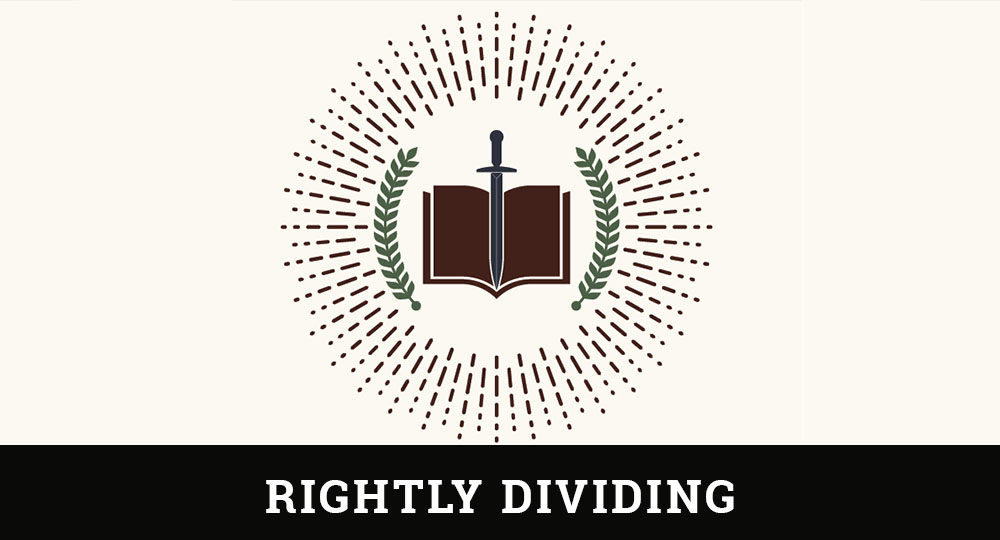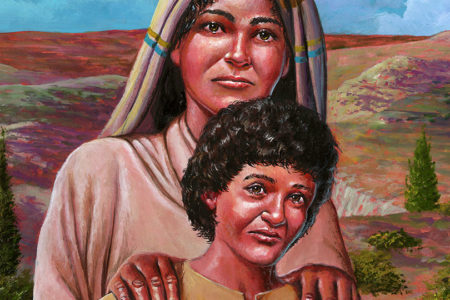Judgment in the Middle East Zephaniah 2:4–15
When Iraq’s Saddam Hussein invaded neighboring Kuwait, world tensions were ignited. Hussein is a proven despot who envisions himself as a modern-day Nebuchadnezzar and aspires to become the leader of the Arab world. Such a herculean feat can be accomplished only by controlling the Middle East oil supply and gaining the support of disenfranchised Arabs throughout the region.
There is biblical precedent for Hussein’s aspiration to dominate the Middle East. Both Assyria and Babylon (located in modern-day Iraq) once swept westward to conquer and control the area. Zephaniah detailed how God used Babylon to bring judgment upon Gentile nations in the Middle East.
Judgment in the West
The first area mentioned by Zephaniah is the land known as Palestine before 1948. The word Palestine is of Roman origin and refers to the biblical land of the Philistines. The name fell into disuse for centuries but was revived by the British as an official name for the area mandated to their supervision by the League of Nations in 1920. Palestine ceased to exist as a legal entity in 1948 when Great Britain, unable to control Arab-Jewish hostilities, relinquished its mandate to the United Nations who, in turn, formed an Israeli state on May 14, 1948.
The Philistines lived in the Mediterranean coastal plains before the time of Abraham (Gen. 20:1ff.; 21:22–34; 26:1ff.). They were descendants of Ham and came from Caphtor (Jer. 47:4; Amos 9:7), generally thought to be Crete. Philistia had five major cities during Zephaniah’s day, four of which he mentioned as being marked out for judgment: Gaza, Ashkelon, Ashdod, and Ekron (v. 4). The fifth city, Gath, was omitted, probably because it had been captured by Uzkiah of Judah (2 Chr. 26:6) before this prophecy was given.
Zephaniah said that Gaza would be deserted (v. 4). Gaza was the capital city of the area, and its name means forsaken. It was located between Tyre and Egypt on the Mediterranean coast, and the city accumulated great wealth through slave trading.
The Assyrian, Tiglath-pileser III, attacked Gaza in 743 B.C., making it a vassal city. Pharaoh-neco conquered the city in 609 B.C., and the Babylonians, under Nebuchadnezzar, totally destroyed it around 605 B.C. Through the centuries Gaza has suffered many defeats.
Today Gaza is the main administration center of what is commonly called the Gaza Strip, a narrow band of land along the western Mediterranean coast, 26 miles long and five miles wide. Its population of approximately 500,000 is made up of refugees from other areas of the region, many living in poverty with little hope of bettering their situation. The Gaza area is a hotbed of unrest, contributing greatly to the Intifada (Palestinian uprising) of the last few years.
Zephaniah went on to prophesy that Ashkelon, which is 12 miles north of Gaza, would become desolate (v. 4). The city was captured by the tribe of Judah (Jud. 1:18) but was subsequently conquered by the Assyrians, Babylonians, Persians, Greeks, Maccabees, and Romans. Jeremiah also declared that Ashkelon would become a wasteland (Jer. 47:5–7).
The prophet also said that Ashdod would be driven out (v. 4). Ashdod is 18 miles northeast of Gaza and was one of the principal ports of Philistia. It was to Ashdod that the Philistines brought the captured Ark of God and put it in the house of Dagon. The next day Dagon was found on his face before the Ark, having fallen from his pedestal. When the Ark was carried through the city, men were afflicted with tumors (1 Sam. 5:1–9).
The people of Ashdod were to be driven out at “noonday” (v. 4). There are two possible interpretations of this prophecy. The siege against the city was to be short, lasting only half a day, or the invaders would strike at noontime when the people were at rest and not on the alert against an attack. The latter view seems most likely. Like other Philistine cities, Ashdod was conquered by most of the great powers mentioned above.
The city of Ekron would be dug up (v. 4). Ekron was a center for the worship of Baalzebub. It was one of the cities promised to the tribe of Judah (Josh. 15:11, 45–46) but was later acquired by the tribe of Dan (Josh. 19:43). It, too, was conquered by most of the great powers already mentioned. Ekron was so completely “rooted up” (v. 4) that there is no trace of it today.
The coastal area of Philistia would be destroyed, including “the inhabitants of the seacoast, the nation of the Cherethites! … Canaan, the land of the Philistines” (v. 5; cp. Jer. 47:4–5; Ezek. 25:15–17). The Cherethites are generally thought to have migrated from Crete to the seacoast of Canaan. Cherethite warriors were part of David’s army (2 Sam. 8:18; 20:23; 1 Chr. 18:17). This area, too, was totally destroyed by the above mentioned armies.
The seacoast would be depopulated and become “dwellings and cottages [caves] for shepherds, and folds for flocks” (v. 6). A “remnant of the house of Judah” would also settle in this area after God had turned “away their captivity” (v. 7) from Babylon. The empty houses of Ashkelon would provide security. The Judeans would “lie down” (v. 7) at night in safety, not having to fear ferocious beasts or evil intruders. This promise was fulfilled in 536 B.C. when Judah returned from the Babylonian captivity; it will be further fulfilled during the Millennium (3:14–20).
Judgment in the East
Turning from Philistia, Zephaniah looked toward the east and prophesied against Moab and Ammon. Moab and Ammon were sister nations, both descendants of Lot (Gen. 19:30–38), located east of the Jordan River.
God judged them for two reasons. First. He judged them because they “reproached” (v. 8) Israel. Although they were related to Israel, they continually oppressed the nation (Jer. 48:1–49:6; Ezek. 25:1–11). This oppression can be traced back to the time when Balak hired Balaam to curse Israel (Num. 22–24) at the borders of Moab.
Even after Israel took possession of the promised land, Moab and Ammon sought to destroy her (Jud. 3:12; 10:7–9; 11:4–6). God used Saul (1 Sam. 11:1–11) and David (2 Sam. 10:1–14) to defeat Ammon, while Jehoram and Jehoshaphat defeated Moab (2 Ki. 3:4–27).
Second, these nations were judged for their pride. They “magnified themselves against their [Israel’s] border” (v. 8). They did this in a number of ways. (1) They “reproached” (vv. 8, 10) Israel by their “revilings” (insults and arrogant boastings, v. 8). (2) They tried to retake the land that God gave to Israel. (3) They attempted to dominate Israel. (4) They rebelled against “the LORD of hosts” (v. 10) by trying to destroy His people.
Amos revealed two other sins for which these nations were judged. First, the Ammonites “ripped up” pregnant women during their border raids into Gilead, thus destroying the country’s population and making it impossible to extend their land holdings (Amos 1:13). Second, the Moabites committed the despicable crime of digging up the bones of Edom’s king and burning them into lime (Amos 2:1). Although this incident is not recorded in the historical books, many scholars believe it took place during the time when Edom aligned herself with King Jehoram of Israel and King Jehoshaphat of Judah to attack King Mesha of Moab (2 Ki. 3:4–9).
The pronouncement of God’s judgment was given: “Surely Moab shall be like Sodom, and the children of Ammon like Gomorrah” (v. 9). These nations were to meet the same utter destruction as the two cities from which their parents had been delivered. Their land would be overgrown with “nettles” (thorns and thistles, v. 9), a symbol of judgment and desolation (cp. Isa. 34:13; Hos. 9:6; 10:8). The land would be covered with “salt pits” (v. 9), thus becoming salty like the area surrounding Sodom and Gomorrah. It would be a “perpetual desolation” (v. 9). The once-fertile lands of Moab and Ammon would become sterile, salty, and desolate with no hope of recovery. The certainty of their destruction is affirmed by the words, “as I live, saith the Lord of hosts” (v. 9). Jehovah swore by Himself (because there is no higher authority) that both nations would be completely destroyed. Finally, their land would be possessed by Israel: “the residue of my people shall spoil them, and the remnant of my people shall possess them” (v. 9). This prophecy will be fulfilled during the Millennium when Israel occupies the land promised to them in the Abrahamic Covenant (Gen. 15:18).
The Lord has shown Himself to be “terrible” (v. 11) to Moab and Ammon as an example to all people around the world and throughout the ages who practice idolatry: “for he will famish all the gods of the earth; and men shall worship him” (v. 11). In other words, God will make lean and ultimately destroy idolatry worldwide, leaving only Himself to be worshiped. Worship of God alone will become a reality during the Millennium (Mic. 4:1–2; Zech. 14:16; Mal 1:11).
Ammon and Moab, which were located in the area known today as Jordan, were defeated at the hands of nations more powerful than themselves when the Philistine cities were destroyed. History confirms that Moab ceased to be a power in the Middle East.
Judgment in the South
Zephaniah then turned from the east to the south and prophesied judgment on the Ethiopians. “Ye Ethiopians also, ye shall be slain by my sword” (v. 12; cp. Isa. 20:4; Ezek. 30:4–9), said the Lord. Ethiopia is southwest of Egypt and was inhabited by the Cushites. They were descendants of Ham (Gen. 10:6) and controlled the area known as Eastern Sudan, Ethiopia, Somalia, and Eritrea. The Ethiopians ruled Egypt from 720–654 B.C., and at times they threatened Judah (2 Ki 19:9; 2 Chr. 14:9–13; Isa. 37:9).
Ethiopia’s destruction is simply stated: “ye shall be slain by my sword” (v. 12). The sword referred to is the Babylonians, whom God used, under the leadership of Nebuchadnezzar, to destroy Ethiopia in 586 B.C. (Ezek. 30:4–5, 9).
The Ethiopians will be confederated with the army from the north that will invade Israel during the Tribulation (Ezek. 38:5). Still, the Lord is concerned about the salvation of Ethiopia and will include her in the Millennium (3:10).
Judgment in the North
Turning from the south, Zephaniah looked toward the north and prophesied the destruction of Assyria. Although Assyria is situated northwest of Judah, the prophet spoke of the nation as being north (v. 13) because it was from that direction that she invaded Israel.
Assyria dominated the ancient world from 883–612 B.C., but Zephaniah prophesied that the Lord would “destroy Assyria; and … make Nineveh a desolation, and dry like a wilderness” (v. 13).
Nineveh was situated on the left bank of the Tigris River opposite present-day Mosul, Iraq. It seemed to be an impregnable city, being over 7.5 miles long and encompassing an area of 1,730 acres—enough territory to accommodate 120,000 people. Its walls were 100 feet high and 50 feet wide and had 1,200 protective towers and 15 gates. The king’s palace had at least 80 rooms with 9,880 feet of sculptured walls detailing his victories in battle. The king boasted of a library containing over 20,000 clay tablets dealing with such subjects as religion, science, and lexicography. Within the city were parks, botanical gardens with unusual plants, and a zoo. Water was supplied through conduits from approximately 25 miles away. They even constructed an aqueduct to control flooding from rivers in the area.
The destruction of Nineveh came at the hands of the Medes and Babylonians, after a two-month siege, in August of 612 B.C. Historians state that her overthrow was due, in part, to a sudden release of dammed-up water that surged against the city wall. This, in turn, softened the sun-dried brick wall, making it easy for the invading armies to break through and capture the city (Nah. 1:8; 2:6; 3:13, 15). Nineveh’s destruction was so complete that Alexander the Great marched his army over the buried city and never knew it. The city became utterly desolate, as the prophet had declared, being occupied only by wild beasts such as the cormorant (pelican), an unclean bird (Lev. 11:17), and the porcupine (v. 14). The phrase “their voice” (v. 14) refers to the wind making a sighing or moaning noise as it blows through an open window or door in the desolate city. The sound over Nineveh was like a funeral dirge.
Zephaniah profiled Assyria’s attitude before her destruction. First, her prosperity produced a self-indulgent lifestyle giving her the image of a “rejoicing city” (v. 15). Second, her power and protection made her feel secure and invincible; thus she “dwelt carelessly” (v. 15), giving no thought to the possibility of being conquered. Third, she became proud in her position, boasting, “I am, and there is none beside me” (v. 15). Such is the boast of nations, both ancient and modern, at the height of their power (cp. Isa. 47:10). God will not only bring such nations to “desolation” (v. 15) but will cause those who pass by to “hiss, and wag his hand” (v. 15). In other words, people will scoff and shake their fists at Assyria as a sign of contempt for a nation who considered herself better than others.
This age-old scenario is once again being played out as Iraq’s Saddam Hussein flexes his military might, saying, “I am, and there is none beside me in the Middle East!” Iraq’s unprovoked attack against defenseless Kuwait has raised the ire of nations worldwide. They have drawn a line in the sand, warning that further Iraqi aggression will precipitate a full-scale war in the region.
God’s Word stands sure; war will inevitably come in the Middle East when He brings judgment on the areas described by Zephaniah. But just when that judgment will take place is uncertain. Could it be that the world-shaking events we are witnessing daily in Eastern Europe and the Middle East indicate that we are on the threshold of end-time prophecies coming to fruition?








You say in the article that “Ethiopia is southwest of Egypt.” Are you saying that they occupied different areas in relation to one another in ancient times?